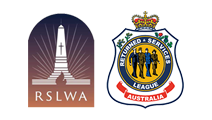In the Cottesloe RSL committee room hangs the Cottesloe and Cottesloe Beach Honour Roll listing the names of 988 men and two women who served in the Great War of 1914-1918. Only Doug Hill, who grew up in the district and served in the Second World War could put names to any. The majority had become – just names.

In the ten years after the ‘war to end all wars’, thousands of memorials and honour boards were commissioned by a nation determined that the men and women who served and those who never returned would not be forgotten and the words LEST WE FORGET is engraved on many. War memorials of stone were the altars of grief where those who survived and grew old could re-live the memory of a youthful voice and laughter and see in a name, the face that never ever grew old. With the passage of time, the intimacy of monument and memory diminished and departed. The honour boards, with columns of barely legible names, hang unseen on school and church walls or are removed to cupboards or storerooms on the pathway to the car-boot sale or garbage tip.

In 1914 Cottesloe and Cottesloe Beach embraced the present Cottesloe, Mosman Park and Peppermint Grove (CMPPG) and I undertook to profile as many names as possible. I began with the assumption that honour boards in the custody of the local RSL, churches, schools, sporting and social clubs would refer to local men who went to war and had clear links to CMPPG. Not so! More than 200 of the names on local honour boards could not be linked. Some may be the names of war-time mates or boys who attended Cottesloe school in 1903 and then moved to a country town or interstate with their families. A similar case is The Cottesloe Beach (29) Boy Scout Troop Honour Roll that has names of sixteen year olds and one only fifteen years and eleven months. A church Honour Roll may record the sons of farming families with a holiday cottage at Cottesloe. It was also apparent from the start that a significant number of the men and women on our local Honour Rolls were not born in Western Australia. This is to be expected in an era when the gold rush that began in the 1890s lifted Western Australia’s population from about 40,000 in 1889 to more than 200,000 by 1914.
A reader must bear in mind that a soldier’s service file has passed through many hands, and many hands can result in occasional errors and even contradictions. Some entries are in a copperplate style, some an indecipherable scrawl and others typed. When a name is misread the error may be transferred to Honour Rolls and War Memorials. The Cottesloe and Cottesloe Roll of Honour has several errors that were carried onto the Mosman Park memorial: Forest – Forrest, Francises – Francisco, Andrews – Andreas, Lytton – Litton, Townsend E.J. – Townsend F.J.

An individual service file may range from ten to 100 pages with the average being about thirty, and these can be downloaded to a computer and printed. The cover page will offer, usually in the enlistee’s handwriting, his full name, place of birth, age, occupation and next of kin with name, relationship and contact address. The address of next of kin (Nok) may change several times over four years. His date of enlistment written as ‘joined’, may display several changes, as may the section reserved for the unit, regiment or battalion to which he is assigned. Early in the file, there is usually, but not always, the embarkation details and these may not always correspond to dates on the official WW1 Embarkation Roll.
A few pages into the file will be listed his age, height, weight, eye, hair and skin colour and religion, and those that follow give details of service in Australia and overseas, medical treatment, breaches of military law and punishments, leave with, and without authority, date and place of a wounding or death, hospitalisation, missing in action, capture as a prisoner of war, burial details and the return to Australia (RTA) and discharge. If the person served overseas, the final page will show his service medal entitlement, one, two or three. The 1914-1915 Star was for service in any theatre of war between 5th August 1914 and 31st December 1915, and usually in the company of the British War Medal (BWM) and the Victory Medal (VM). The citations for awards, such as a Military Cross for officers and Military Medal for other ranks, are generally noted in the file and if not, a Google search of the Australian War Memorial Military Awards will be rewarding.
The address of the next of kin may include suburbs and streets that no longer exist. Osborne was later split between Swanbourne and Claremont and in 1914-1918 Cottesloe and Cottesloe Beach houses had no house numbers. This makes it difficult to pin-point the former residence of a next of kin.
Dr. Neville Green


